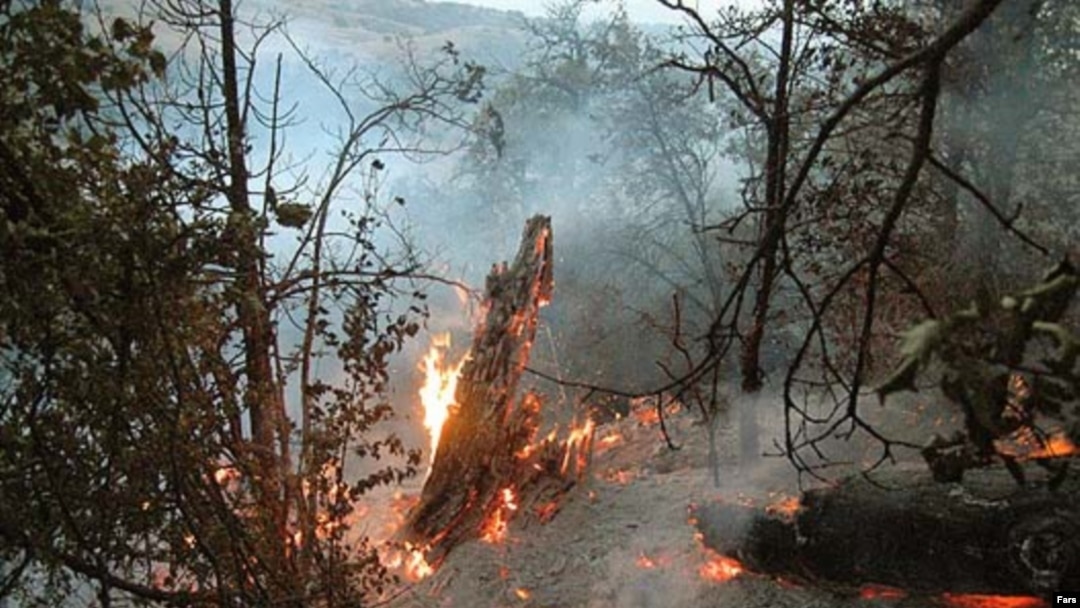Recent floods have left many communities in eastern Afghanistan severely damaged.
The flooding, caused by heavy rains and exacerbated by deforestation, has washed away homes, livestock, and farmland. United Nations' agencies report that at least 30 people have been killed and thousands left homeless.
The Asian Development Bank has estimated in 2004 that "traditional, noncommercial" energy sources -- such as wood -- supply around 85 percent of Afghanistan's energy needs, according to the U.S. Energy Information Administration. That requires widespread cutting of trees.
Environmentalists and other scientists stress that the deforestation problem should be viewed in a broad context -- both regionally and beyond its effect on plants and forest animals.
Esmail Kahrom is a professor of zoology and environmental science in neighboring Iran. He cites a cautionary tale from northern Iran to demonstrate that deforestation triggers a whole chain of events that can end in a human disaster.
"[In Iran] the most pressure has been on the forest in Elborz region," Kahrom says. "During the last 30 years, the area of forestation has been reduced to half. We are losing forests because of firewood and grazing animals. When you lose the forest, then the soil is exposed to the rain, to the sun, to the wind. Then the erosion starts, and, of course, after that desertification arises. And people lose their jobs, their animals, and more and more people rush into the big cities."
Tajik Trouble
In late April and early May, heavy rain and hail caused mudslides and floods in southern Tajikistan. Farmlands, more than 3,000 hectares of cotton plantations, and roads and bridges were damaged in the Khatlon region.
"They had only 7 percent of arable land and they have lost half of it. And they are losing every year about 50,000 hectares," Smalys says. "Keeping in mind that the population is growing by nearly 2 percent per year, you can imagine that [in] 10-15 years, there'll be a lot of people having absolutely no land. Tajikistan is an agricultural country, so it will be a huge social, economic, and political problem."
In an effort to tackle the issue, the OSCE in 2006 launched a public-awareness campaign on the effects of deforestation in Khatlon. Planners expect some 20,000 trees to be planted in 14 villages during the nine-month project.
Kyrgyz Efforts
In neighboring Kyrgyzstan, a spokesman for the Emergency Situations Ministry, Abibilla Pazylov, tells RFE/RL that efforts to plant new trees in the southern Osh region are paying off.
"[Kyrgyz authorities] have ordered the planting of a lot of walnut trees on thousands of hectares of dangerous hillside in the Ozgen and Karakulja districts. Now the trees have grown," Pazylov says. "[These new forests] are providing us with an opportunity to reap the fruits of preserving the landscape. Now there are fewer landslides in these places."
But Kahrom stresses that planting new trees is no panacea. He says the destruction of natural forests often leads to irreversible losses of plant and animal species.
"When we lose the forest, we lose the base of [the] ecosystem; and it is very difficult -- if not impossible -- to start to replant," Pazylov says. "In [the] Elborz Mountains, we have had forests that are ancestors of European forests, according to specialists. That means that these are the natural forests that had been here for thousands of years. If you cut them down, you tend to change the whole biodiversity. We have already lost the Caspian tiger as a result of all this destruction of the forest 50 years ago. The other species which are connected to the forest will follow suit."
Saving The World's Largest Walnut Forest
A resident of the village of Arstanbap, in Kyrgyzstan's southern Jalal-Abad region, wants authorities to impose stricter measures to protect a unique walnut-fruit forest before it's too late. Villager Burulai Buzurmankulova says it's not just firewood collectors, either: Culprits include collectors of burls -- the smooth, knotty growths on trees -- who then sell them for decorative purposes.
Walnut-fruit forests, characterized by remarkably high biodiversity, are at risk of disappearing in Kyrgyzstan due to blight, pestilence, and the cutting of trees for fuel, cattle grazing, and land cultivation.
As the region becomes more economically secure, environmental concerns could gradually offset some of the development and other pressures that drive deforestation. But for many communities in Central and South Asia, that is a distant prospect.
(RFE/RL's Kyrgyz Service contributed to this report.)
An Increasingly Thirsty World
A MATTER OF LIFE AND DEATH. Disputes about access to water are increasingly coming to the center of global attention, especially in China, India, and Central Asia. Writing about the 1967 Six Day War in his 2001 memoirs, Israeli Prime Minister Ariel Sharon said that "while border disputes between Syria and ourselves were of great significance, the matter of water diversion was a stark issue of life and death." (more)
RELATED ARTICLES
Tibetan Water Plans Raise Concerns
Environmentalists Say China Misusing Cross-Border Rivers
China's Economic Boom Strains Environment
Nature Waits For Cross-Border Sanctuaries To Catch On
Overused Rivers Struggle To Reach The Sea
UN Water Report Takes A Hard Look At Central Asia
Irrigation, Pollution Threaten Central Asian Lakes
THE COMPLETE STORY: Click on the icon to view a dedicated webpage bringing together all of RFE/RL's coverage of Kazakhstan, Kyrgyzstan, Tajikistan, Turkmenistan, and Uzbekistan.


